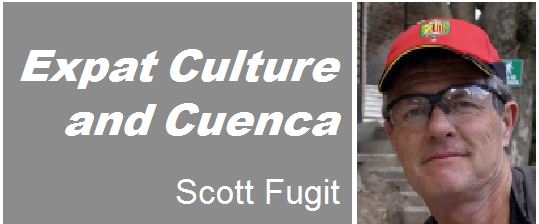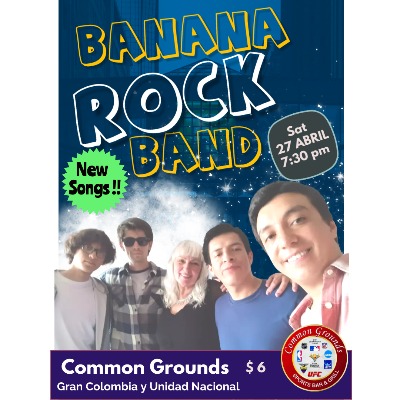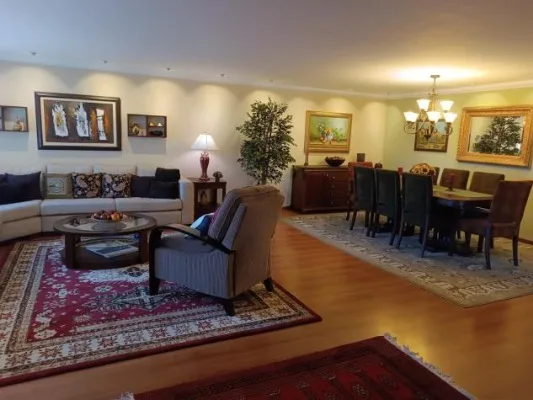The Chickens and the Egg: hire a private driver, see the Cajas, visit the coast, just don’t forget the huevos
By Scott Fugit
“Jaime is a very safe driver,” Bill assured me – or was it Bob – as he pulled the napkin out from under his fourth margarita and scribbled down the name and number. “Sounds like a good contact. Thanks,” I said. It was our third driver recommendation since the party started. My wife, Dee, and I were at a popular Cuenca dinner bash with a good mix of both eccentric gringos and stiff drinks. What could be wrong with this advice?
Need a guaranteed conversation starter? Try this one: “We’re heading to the coast from Cuenca for the first time. How would you make the trip?” Be ready for color commentary.
“We took a 10-seat van and the guy driving was nuts. Scared the crap out of everybody. He passed trucks in the fog on a prayer.”
“The biggest buses are very comfortable but slow, and we had to change at the terminal in Guayaquil. That place is huge.”
“With any bus, you still have to get a taxi to get where you’re going … too much hassle.”
“A chauffeured SUV is the ticket. It’s expensive, but door-to-door.”
“We rented a car and drove ourselves. I’ll never do that again, at least not with my husband.”
“You should just fly.”
A lifelong New Yorker left us with this teasing advice: “Don’t be chickens, hire your own driver.”
Reveille went off as usual at 6 a.m., with the classic combination of barking dogs, crowing roosters, clanking metal gates and my favorite, Cuenca’s unofficial theme song, the car alarm. Loja coffee with raw crema and a chunk of brown sugar, the morning Andean sun, and the fascinating street view from our fourth floor veranda, made early morning worth it. Most importantly, we were starting another day of adventure in Ecuador.
We had booked Jaime as our private driver for the trip to Salinas. He had a new vehicle, spoke good English, wrote decent emails, and he knew our destination. We agreed on a price for the round trip, which totaled over 600 kilometers. Plus, Jaime assured us, he was a very safe driver.
As I retrieved a second cup of coffee, the usual level of traffic noise was topped by a loud metal on pavement screech from the street below. Excited voices soon followed. We peered over the veranda wall to see an extremely rare site, a 1979 Ford LTD Landau two door sedan – the three wheel model. The driver was retrieving the fourth wheel from where it had stopped rolling, a half block down the street. Amid the traffic, as his female companion looked on in stilettos, a small group appeared with a floor jack, the custom single lug nut was found, the wheel replaced and the LTD was soon rolling again. “I hope that’s not an omen.” Dee said.
My phone rang. Jaime would be late to pick us up. His car was blocked in; a tow truck was on the way. No problem. “We’re never in a hurry,” I explained.
Anytime you’re in Ecuador, you can have a new lifelong friend within the next hour. Jaime is that kind of guy. Born and raised in Cuenca, he knows the details on everything and everyone. After ten years in Florida, he was back home competing in the growing league of drivers and facilitators serving the gringo community. We loaded into his new Chevy and were off through west Cuenca. With his excellent English, our conversation was interesting and constant. Jaime’s vehicle seemed in good repair, all mirrors were intact, the tires looked good and he had a spare. Jaime drove with two hands on the wheel, wasn’t texting, seemed to respect pedestrians and even slowed for dogs. He apologized again for being late and promised to get us to Salinas on schedule. I reminded him we didn’t have one.
At our first rest stop, Jaime’s expression changed when a young man pointed to our rear tire. It was half flat. “I have never had any problems. These tires are new.” He apologized now for the second delay. “It’s just flat on the bottom,” I joked. He tried to laugh.
In Ecuador, which has few street signs, there is a specific navigational system you must master to get anywhere. It’s called ask a local. Jaime was an expert. In his rapid Spanish, he got a woman carrying a basket of mangos to point out the closest tire shop, a small unmarked tienda with two half-buried truck tires standing out front. As a heavy rain started, and with the wifey calmly reading magazines in the back seat, the small SUV was jacked up, the tire removed, repaired and replaced. I paid the $5 fee. We were on the road again, relieved, but with more time to make up.

The copilot and in-flight adviser.
And then the clattering noise started. Both the heat gauge and a strong odor said the same thing: mucho caliente. We pulled over near a landscaping project and Jaime quickly had a workman fetching a bucket of water. A pinhole leak had drained the radiator. Jaime tried to smile but showed all the classic signs of a frustrated male. Having gringos somewhere on time was his job. Not today, but at least we were moving. Luckily, we could carry enough water to get us to the next rest area, stopping every 15 minutes to refill the Chevy steamer.
Want to practice your Spanish in Ecuador with two or three friendly locals, anytime, anywhere? Just raise the hood on your car. They will modestly appear with questions and advice. I could pick out a few words of Jaime’s radiator conversation. Did someone say “huevos”? In Ecuador, you’re never very far from fresh eggs. Jaime bought one nearby, and chipped the top off with his ignition key. “These guys say to put egg in the radiator and it will slow down the leak – just the clear part, not the…. the….” “The yoke,” I said, glad to contribute something. Neither of us had ever heard that one. We finished up, shook hands with our small group of smiling advisers and drove the last hour to Salinas without another stop. The hard boiled band aid had worked. We agreed there should be huevos in every car’s emergency tool kit.
For our return trip, Jaime arrived in Salinas early. He had already driven 335 kilometers from Cuenca, eaten breakfast and read the paper. He had a new radiator, inspected tires, and a smiling, determined attitude – plus something to prove. He apologized again for the problems of the previous trip and added, “It will be shorter today.” Dee glanced at me and got out her magazines. We all buckled in. From my co-pilot’s seat, the view was unlimited and the weather perfect. We launched.
Is there an official record holder for the Salinas to Cuenca run? Jaime has to be a contender. If we wanted an Ecuador driving experience, he took us to school. We learned that most of Ecuador’s traffic laws are more like suggestions. Pass faster when you see double yellow lines. You can tell at a great distance which automated speed monitoring stations have cameras – most don’t. There was no law enforcement of any kind, and no accidents. There’s plenty of traffic competition, but also cooperation. We saw no road rage incidents, but we did see a road that was raging. The number of large commercial trucks was impressive, mixed with tour vans, huge buses, cars and pickups from ancient to new, plus many, many motorcycles. Ecuador’s traffic is as varied as its landscape. Speeds also vary, which increases risk. Smooth, modern pavements allow the latest models to cruise, while local farm vehicles are overloaded and slow. Throw in our determined driver, and excitement is born.

The Cajas – we think they were beautiful.
“Did I scare you honey?” Jaime responds to my wife’s tense back seat muttering after we slingshot around another flatbed carrying a tractor. “I can see much better from up front here. I have never had an accident.” he assures her. Dee has a two hand, white knuckled grip on the shoulder strap. She has given up on using the camera or reading magazines. Her expression is grim. I can see the road too – and it’s coming at us very quickly. We are east of Guayaquil on a long two lane stretch with heavy volume. Passing is like chess – every move counts. Jaime is definitely good in both timing and judgement. Still, my feet are pressing hard against the Chevy’s floor and my legs are tense. It’s raining hard as we accelerate past a slow, overloaded banana truck – with an oncoming bus closing rapidly and flashing its headlights. As Jaime deftly cuts in front of the truck, there, completely blocked from view, is a family on a motorcycle – two small kids wedged between mom and dad. As the motorcycle slowly gives ground, Jaime slides into the available lane space just as the bus rumbles past in the opposite direction. The motorcycle’s handlebars are within my reach. “Holy S—, Jaime”, I hear from the back seat. He chuckles softly. “Don’t worry Honey, there is lots of room. Passing is easy when the road is flat.”
Dead ahead, the highway disappears up and into Cajas Mountains.

Something furry flashed past – was that a llama?
The high point of the journey comes at the 4,160-meter Tres Cruces summit of this massive mountain range. Looking back, we think they were beautiful. Dee took pictures – they’re all blurry. The climb is exhilarating, but Jaime truly shows his stuff on the decent. It’s like NASCAR with more greenery. He uses the whole road, following a tight line through every corner. “Was that a llama?” Dee asks as something tall and furry flashes past. “Yes, not everyone gets to see them.” Jaime tells us as he accelerates into another downhill bend. We all lean in unison at every curve in the road. Finally, as we approach Cuenca, I see a welcome sight – it’s the relief in my wifey’s eyes.
Jaime pulls up to our Cuenca condo, looks at his watch and proudly says, “Four and a half hours. Not bad, huh?” Dee pays him, includes a good tip and gives him a big hug. “Thank you Jaime, that was an incredible experience.” The door closed, our luggage hit the floor and tranquility soon returned – with the assistance of a corkscrew and two glasses.
For thoughtful expats, trepidation plus hindsight brings reflection. Did we enjoy our trip? Yes, except for the fear. What did we learn? That there are grey areas around terms like “being chickens” and “safe”. What’s our best advice regarding private drivers? It’s the advice we got after the trip. From a long-time Cuenca expat friend: “Next time, make sure you know your driver well enough that you can tell him to slow the h— down.”
Is Jaime a safe driver? Absolutely. My wife and I are living proof.
Bring an egg.
___________
Scott Fugit retired recently to study leisure, travel writing and Ecuador. His goal is to bring real experiences and entertainment to articles relevant to expat life. He and his photographer wife Dee are Cuenca wanna-bees. Contact him at Fugit@mindspring.com.
Article reposted from June 2015.


















